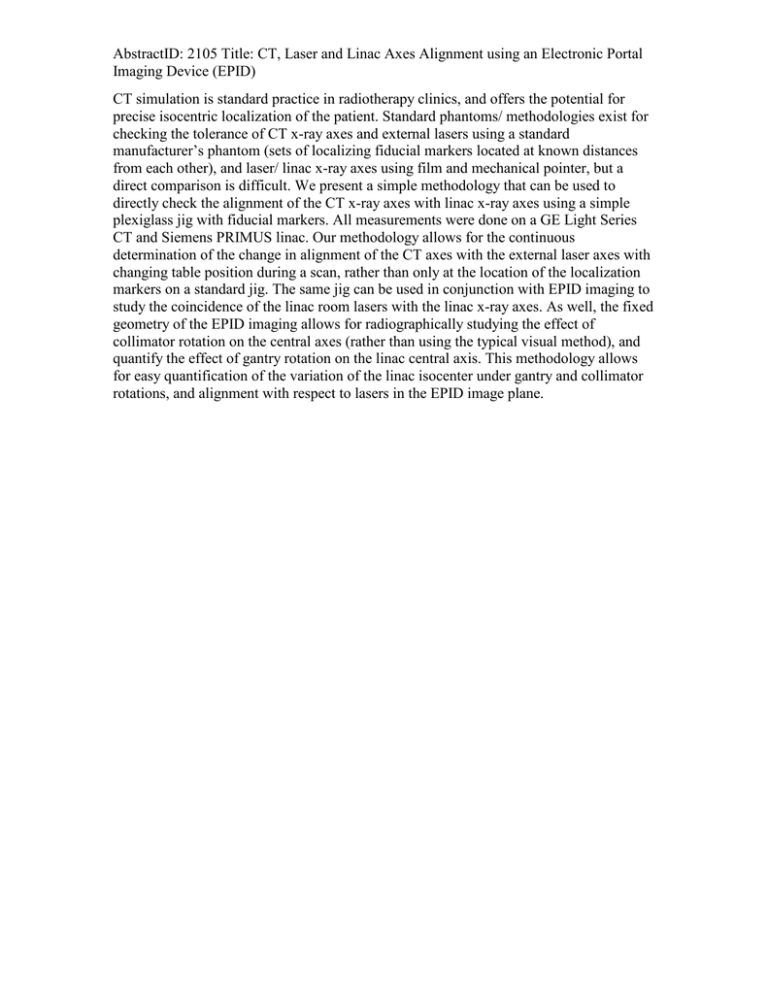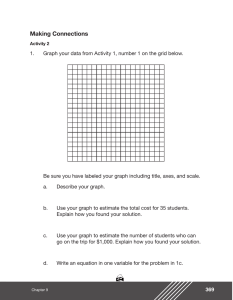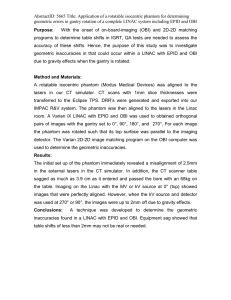AbstractID: 2105 Title: CT, Laser and Linac Axes Alignment using... Imaging Device (EPID)
advertisement

AbstractID: 2105 Title: CT, Laser and Linac Axes Alignment using an Electronic Portal Imaging Device (EPID) CT simulation is standard practice in radiotherapy clinics, and offers the potential for precise isocentric localization of the patient. Standard phantoms/ methodologies exist for checking the tolerance of CT x-ray axes and external lasers using a standard manufacturer’s phantom (sets of localizing fiducial markers located at known distances from each other), and laser/ linac x-ray axes using film and mechanical pointer, but a direct comparison is difficult. We present a simple methodology that can be used to directly check the alignment of the CT x-ray axes with linac x-ray axes using a simple plexiglass jig with fiducial markers. All measurements were done on a GE Light Series CT and Siemens PRIMUS linac. Our methodology allows for the continuous determination of the change in alignment of the CT axes with the external laser axes with changing table position during a scan, rather than only at the location of the localization markers on a standard jig. The same jig can be used in conjunction with EPID imaging to study the coincidence of the linac room lasers with the linac x-ray axes. As well, the fixed geometry of the EPID imaging allows for radiographically studying the effect of collimator rotation on the central axes (rather than using the typical visual method), and quantify the effect of gantry rotation on the linac central axis. This methodology allows for easy quantification of the variation of the linac isocenter under gantry and collimator rotations, and alignment with respect to lasers in the EPID image plane.




